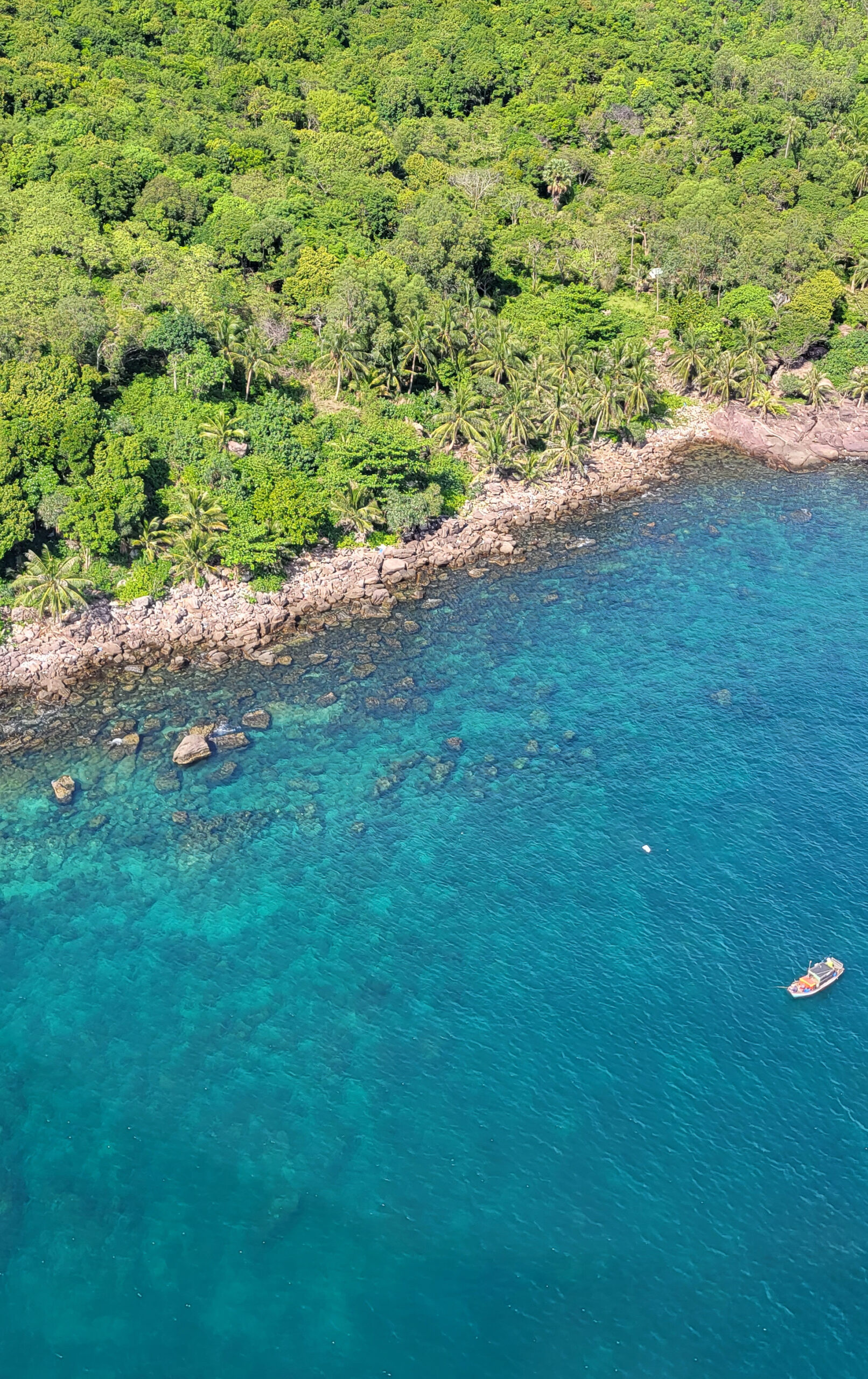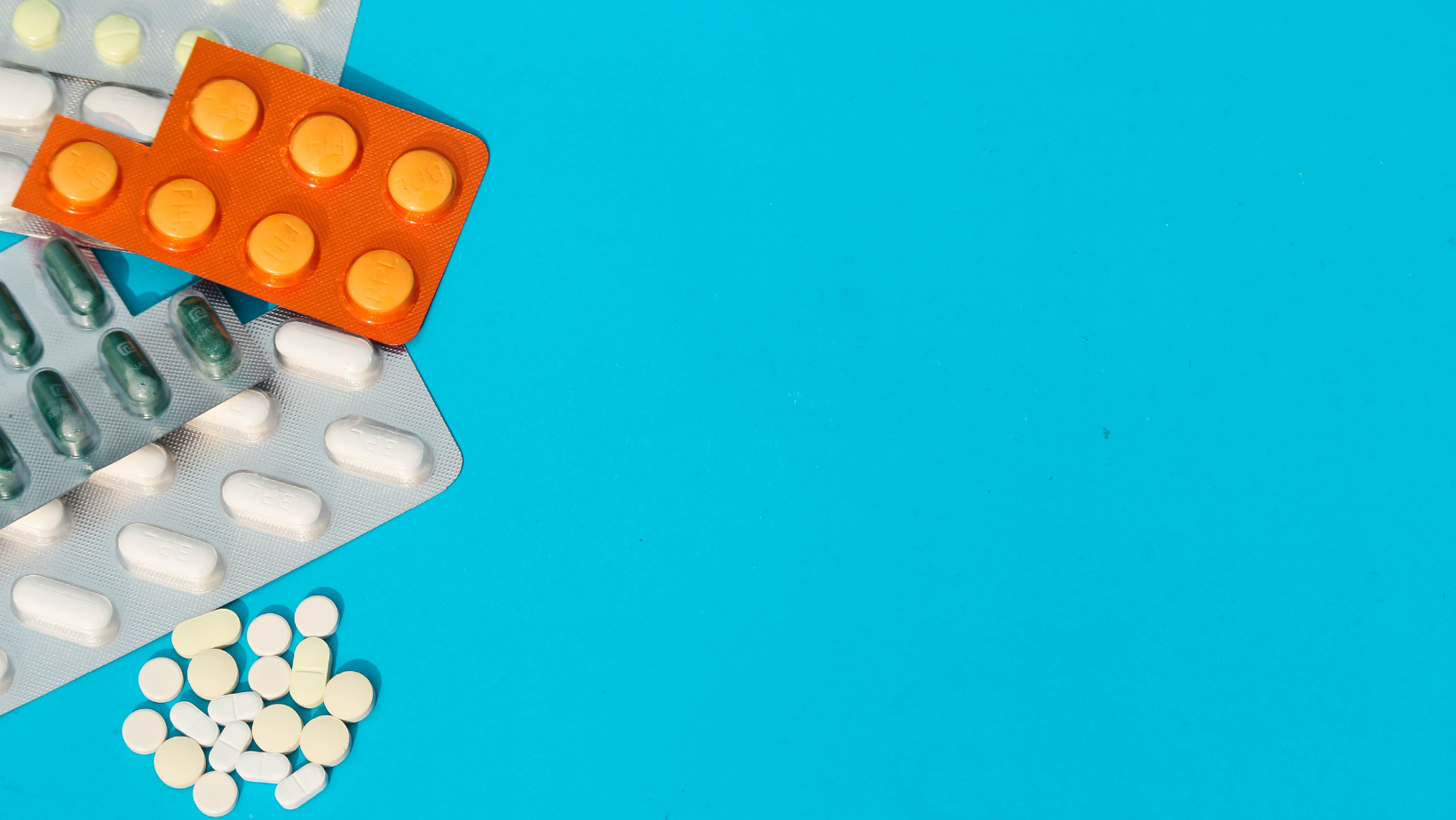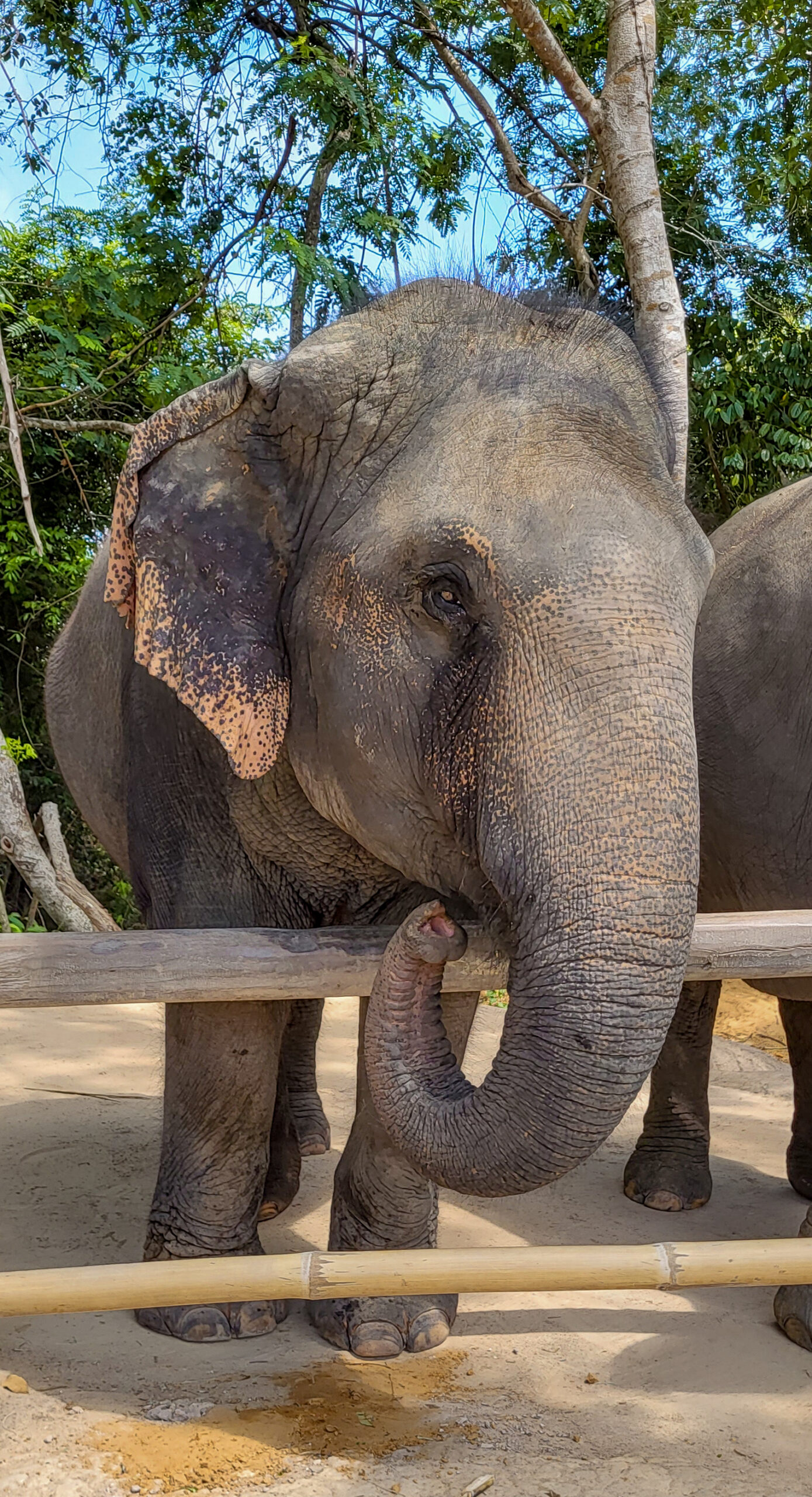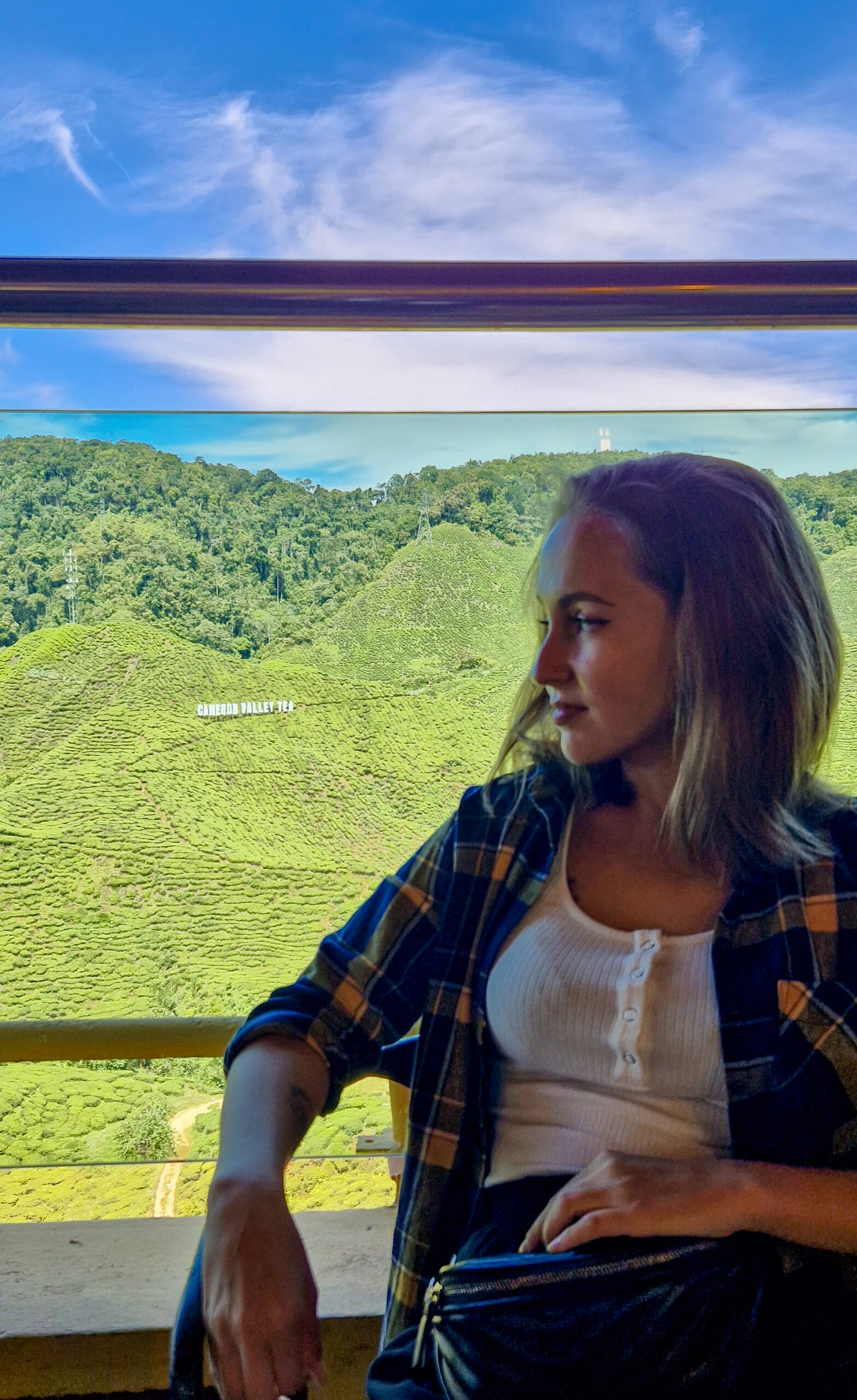A Short History of George Town
George Town is such an atmospheric city located on the eastern coast of Penang Island in northern Malaysia. It’s also the capital of the entire state with the same name as the island. Its history began with the establishment of the British East India Company in the 18th century, trading mainly in the Indian Ocean region. George Town was then established as a free port, and over time it became the first British settlement in Southeast Asia. The settlement developed fast with the arrival of migrants from different parts of Asia, mainly China and India. Their descendants permanently settled on Penang Island, so that today, the entire region is a great cultural mix. George Town’s population grew along with the island’s economic prosperity. Finally, the status of a city was granted to it by Queen Elizabeth II in 1957.
Currently, George Town and the entire island of Penang are considered the „silicon valley” of Malaysia. It’s all becouse of the multitude of opportunities and intensive development of companies in the finance, production and hi-tech sectors. George Town has also become a must-see on the map for all tourists traveling to Malaysia. This is not surprising, because the city has a lot to offer.
George Town – Town square
The history of this place is much more complicated than this short introduction. However, the historical outline matters, because what attracts tourists is mainly the historic colonial part of George Town. And what is so special about it? Atmospheric streets, historic, colorful buildings, street art, street food, culture. The truth is that, there is a place for everyone here. Check out which attractions might interest you!
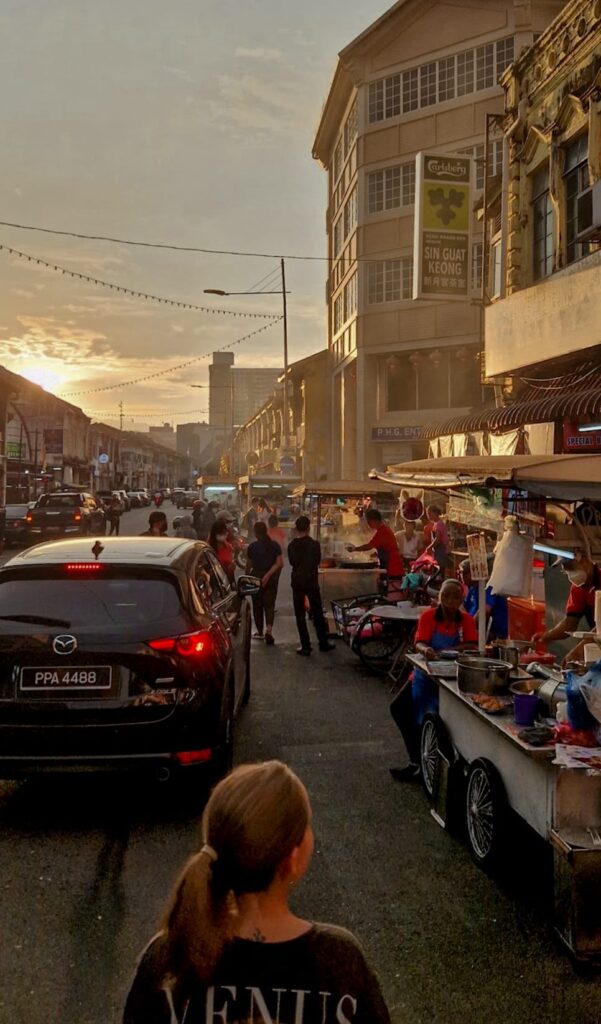
Street Art
George Town is famous for its street art. And the fact that it is located on old, often crumbling colonial buildings adds to its charm. The entire old center is full of street art. An artist who had a large part in decorating the city is a Lithuanian, Ernest Zacharevic. He owns such works as „Children on a Bicycle” or „The Boy and His Motorcycle”.
Cats have become another theme in the city’s street art. Local artists joined forces to form the ASA, or Artists for Stray Animals organization. They decorated cities with paintings of cats in order to build public awareness about stray animals on city streets. Some of them are now practically invisible due to the paints that were used for this project, but some of the works still decorate the city streets. Seek and you will find!
In addition to the murals, you will notice metal constructions, presenting in a humorous way, facts related to the history of the island or individual buildings. They didn’t impress me.
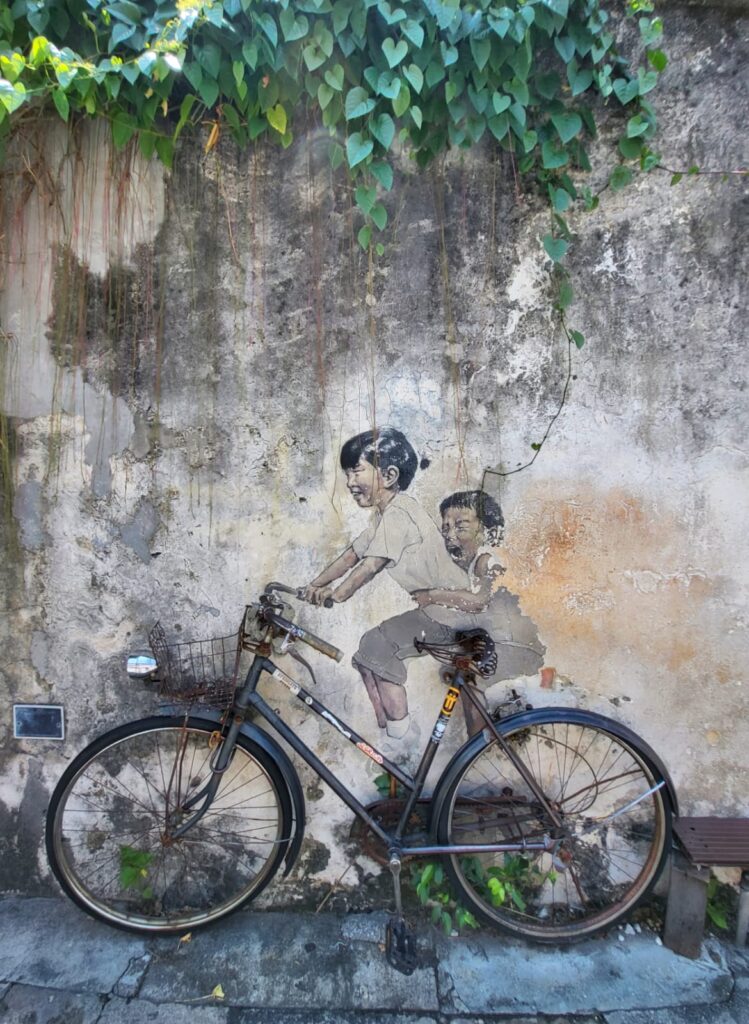

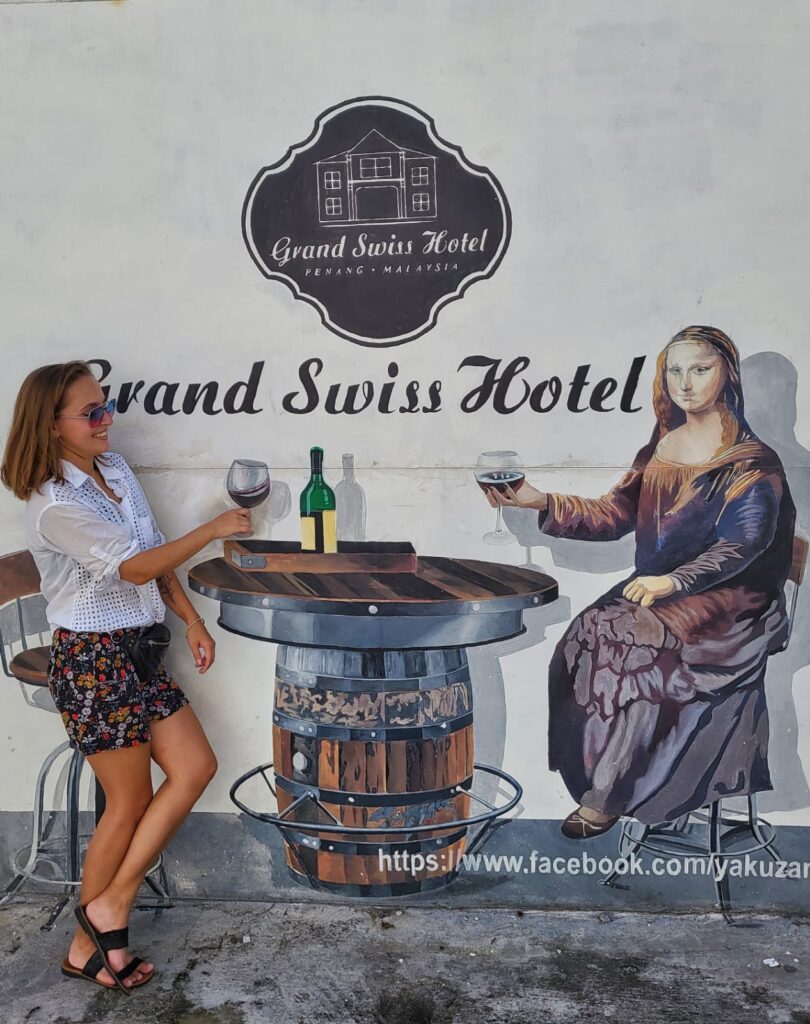
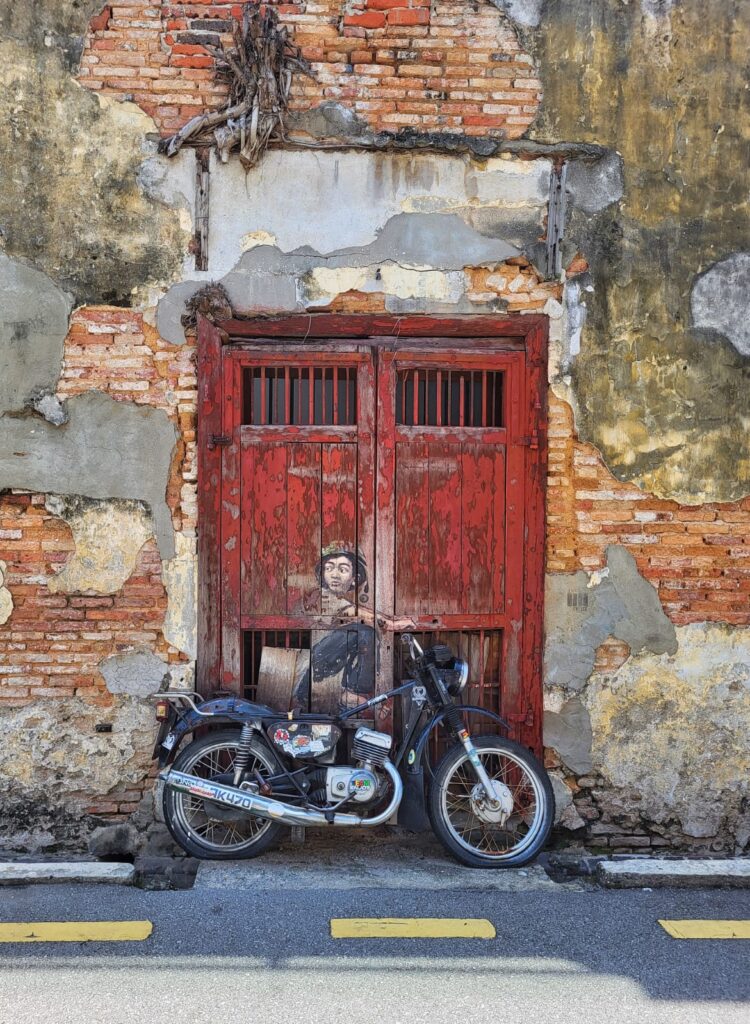
Unfortunately, over time, street art literally began to disappear. I don’t know if these are acts of vandalism, plaster falling off the walls, or the paints used. All I know is that their condition is getting worse every year. Looking at photos of the most popular works from years ago, some of them are difficult to recognize or even find on the walls.
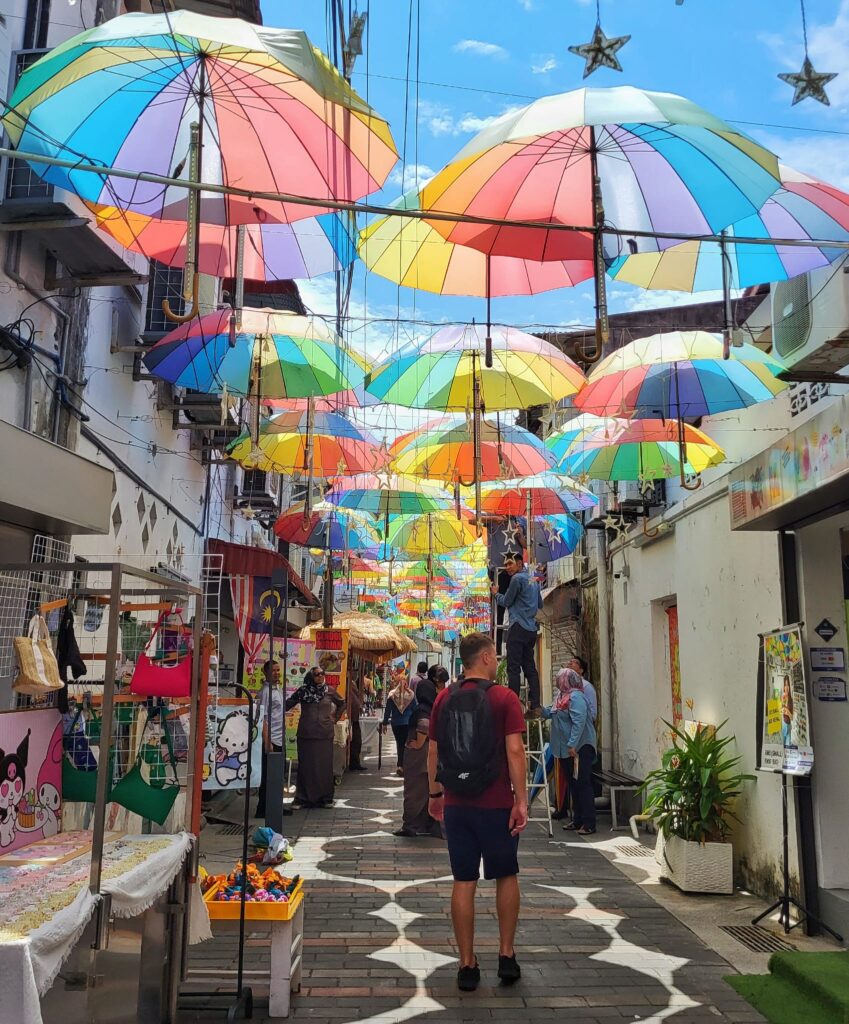
You can get help in locating selected murals, e.g. at any tourist information office. You can also search using Google Map, but you will only find a few main examples of street art here. We made this mistake at the beginning and used Google Maps to go around looking for murals. And they were in a completely different part of the city.
Little India
I haven’t been to India yet, and I’ve already fallen in love with the culture. I won’t even mention the food. As it turned out, I hadn’t encountered real flavors straight from India for years. I had the opportunity to surprise myself. I was extremely happy because I found a new destination for my next travels. It’s all thanks to Little India in George Town. This district is all about atmospheric, colorful streets, full of restaurants, stores and other small businesses. Here you can easily exchange currency at an exchange office, have a delicious meal, see the colorful Sri Mahamariamman Temple and buy Indian goods like spices, textiles and gold. Yes, Little India is a place where you will find plenty of gold jewelry stores at attractive prices. Walking through the streets of the Indian neighborhood gave me a nice foretaste before the actual visit to India.
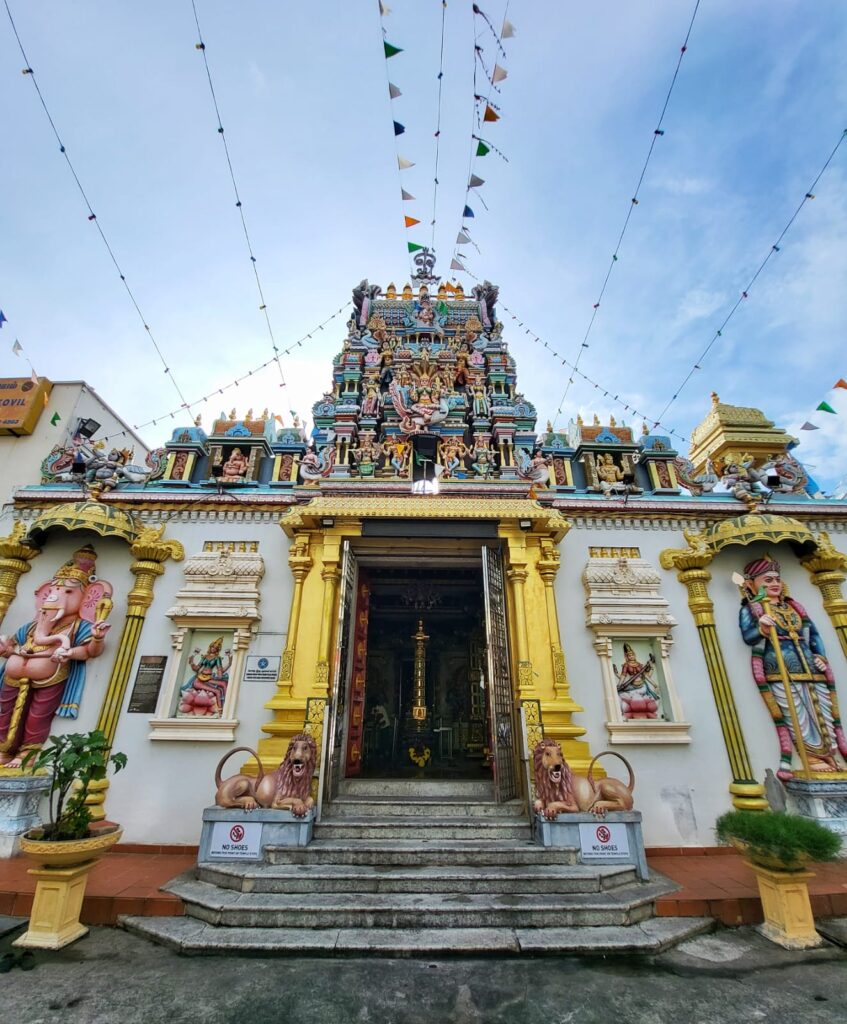
Apart from cultural experiences, it is one of the best places to:
- Exchange cash at an exchange office (at the best rates in the whole city!)
- Buy a Malaysian SIM card
- Take money from an ATM.
Little China
It so happened that our hostel was practically in this district. Little China is actually an unremarkable part of the old city, mostly dominated by the Chinese part of Malaysian citizens. Most of the city is inhabited by Chinese. Almost at every step we will see Chinese signs suggesting thriving businesses, restaurants and accommodation. To be more precise, I will add that within the old city, residents distinguish as many as three Chinese districts that were shaped in different periods of the city’s history.
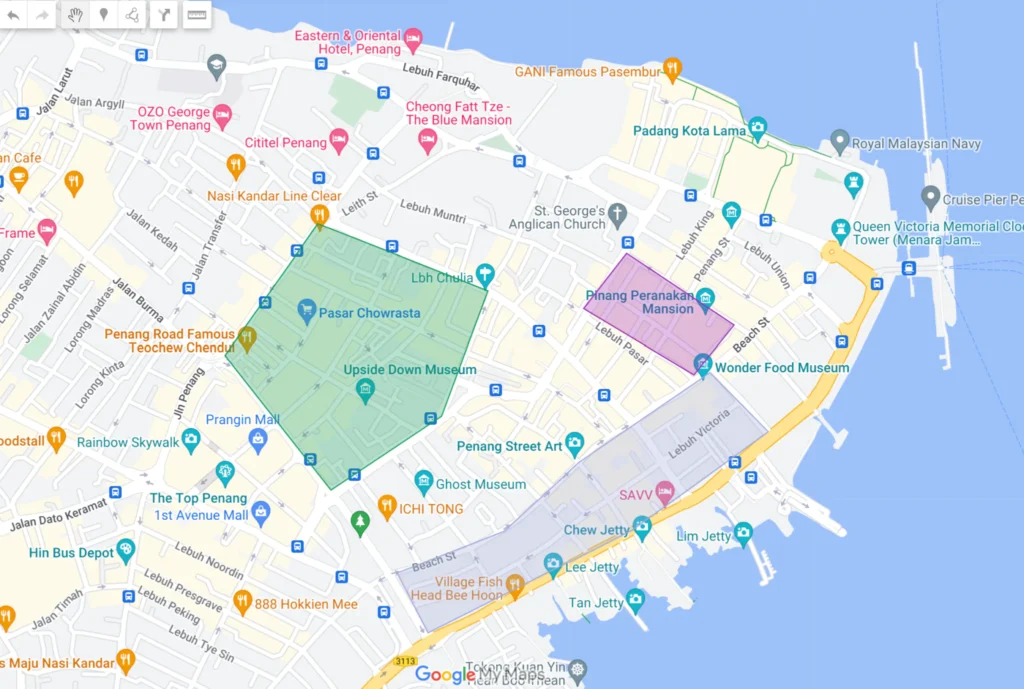
The area, marked in pink, is considered the oldest Chinese neighborhood. It partially overlaps with the Little India area, but the majority of residents are of Chinese origin. The green area is the new Chinatown (the one most guidebooks indicate). The blue (or gray, I don’t know) area is the commercial area that has a direct connection to the Jetty, which I mention later.
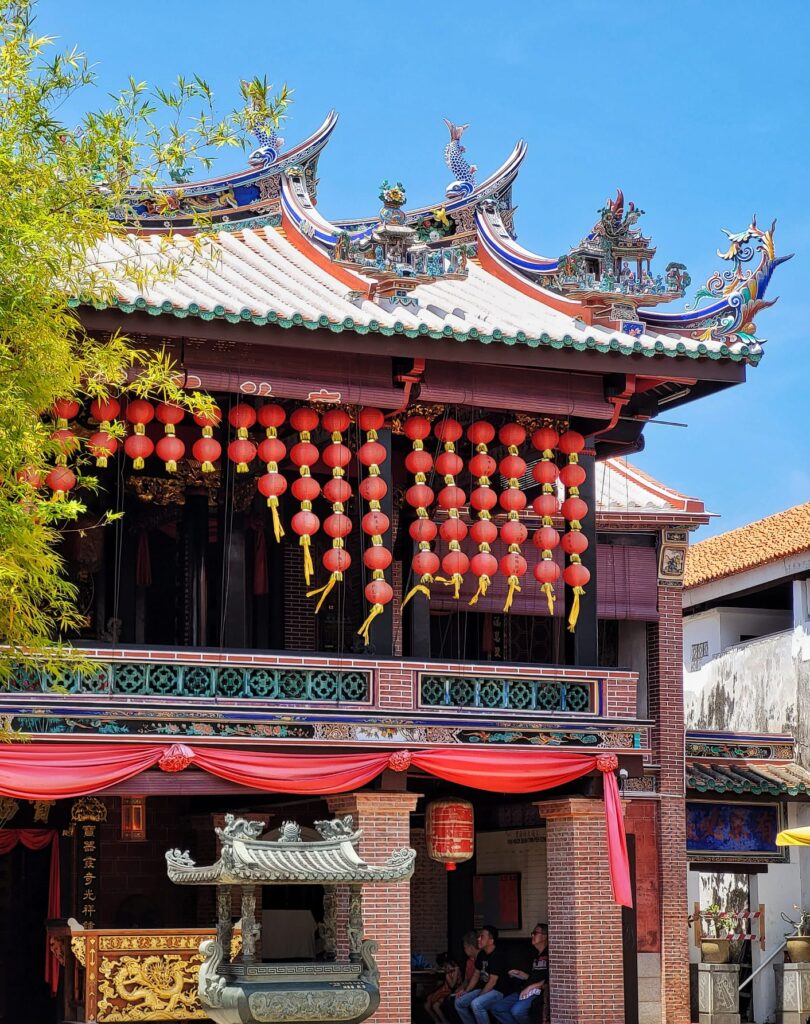
Chew Jetty
If I had to describe in my own words what Jetty is, I would say that it’s a part of the city on the water. In this part, in wooden, run-down houses on the pier, descendants of Chinese settlers live to this day. The first coastal settlements were established in the mid-19th century, and the Chinese people who lived there began to bring other family members. And this is how „clans” were created that dominated on individual piers. The „Chew” in the name of the „attraction” is nothing more than the name of one of the clans. It is also accepted as the general name of the entire settlement. Although we can also easily get to parts belonging to other families ( e.g. Tam or Lim). The whole area is under UNESCO protection.
What can you do in Jetty? Walk around, see the sea, buy souvenirs, eat tasty ice cream. The main paths are full of shops, but if we go deeper, we will encounter authentic places, not focused on tourism. However, I am not in favor of straying too far from the designated route. Keep in mind that this is still a place where many people live. Looking into someone’s home brings mixed feelings.
The Chinese district, located next to the Jetty, is the „business part” where the Chinese community (not only from the clans) runs their businesses, mainly based on trade.

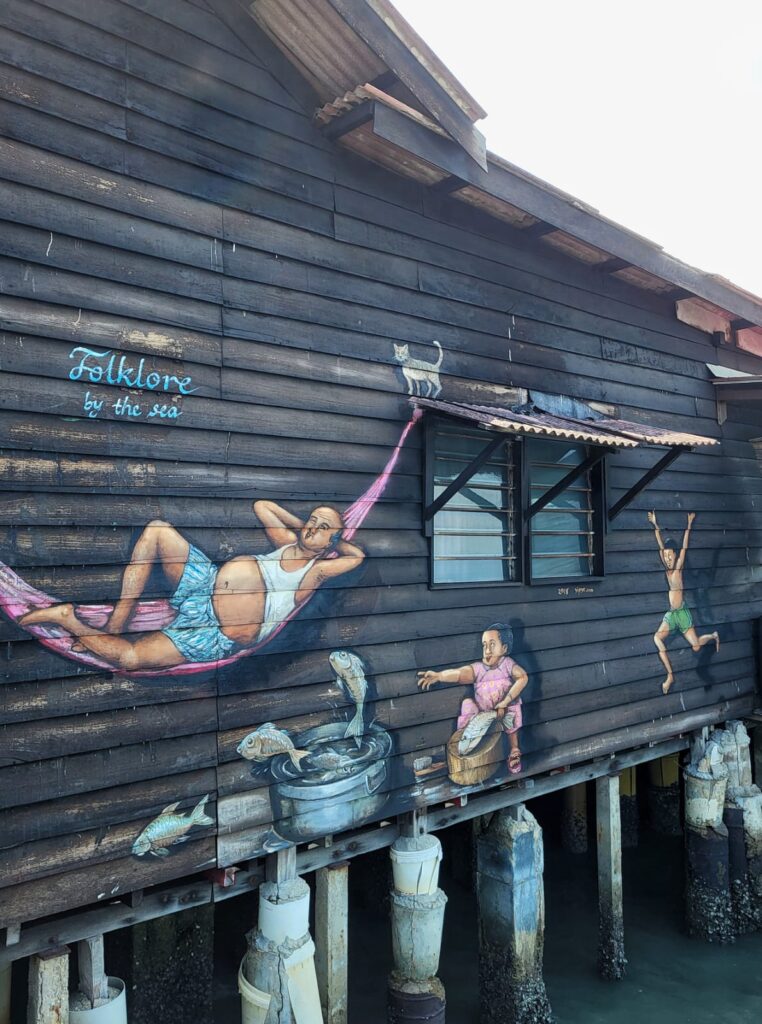
Rainbow Skywalk
Aerial view of George Town? Why not! It’s a pity that we found out about the attraction too late and ended up not going there. You’ll find an observation deck with a panorama of the city and the sea in the KOMTAR building (also called TOP), which is approximately 250 meters high (which makes it the tallest building on the island).
The summit has a pier with a glass floor, a cafe, and next to the building you will find more attractions dedicated mainly to children (e.g. a park with dinosaurs). Depending on the entertainment you want to enjoy, the ticket price will vary. If you are only interested in the view, you will pay 68 MYR to get to the top.
Evening walk to Padang Kota Lama and dinner at the food court
A place worth visiting both during the day and after dark. Simply put, it’s a waterfront with colonial buildings (with a very nice city hall), historical buildings (fortifications, clock tower), a food court, and a promenade.
In the evening, the area becomes a lively meeting place for locals and others. The food court is full, it’s hard to find a place on the wall by the promenade along the shore to sit and enjoy the view. It’s a great location for an evening chillout. By the way, attractions such as the historic city hall are beautifully lit. It’s worth taking a look at them again, this time in a different light.


*3D Trick Art Museum and Upside down Museum
I think, that attractions of this type are nothing new for tourists from other countries, but they are worth mentioning. I treat them as attractions aimed at people traveling with children. So that maybe the little ones can also have a pleasant experience visiting the city. Well, I don’t have children, but I assume that walking through the colonial city streets isn’t a favorite activity for children.
I know that the 3D Art Museum in particular has a good reputation even among adults. These types of attractions are quite popular in Malaysia and we saw a few more such places in other cities.
Fees in Malaysia
My advice is to always double check ticket prices. In Malaysia, virtually every tourist attraction has two prices – for Malaysian citizens (Malaysian ID card holders) and for tourists. The higher fee will always be for the tourist.
When staying in a hotel, hostel or any other accommodation facility, you are obliged to pay a „tourist tax”, which will be added to your accommodation bill. You will pay from 2.5 to as much as 20 Malaysian ringgit for each night in Malaysia. The price depends on the standard of the accommodation.
Moving around George Town
GRAB – Asia’s substitute for Uber/Bolt – operates in the country. If you want to get somewhere, it’s a good idea to keep track of prices and wait to book a ride. Penang is jam-packed and depending on the time of day and traffic, fares can vary.
There is a free CAT bus within the center, which has a total of about 20 stops at the city’s major attractions. It is still mandatory to wear masks on public transportation. Also, you get on through the front entrance and get off through the back entrance. And the bus only goes in one direction. You won’t find any timetables at the bus stop – just sit down and wait for it to arrive. The old city center is not huge, so the walking option is also possible. It’s all a matter of willingness and the weather, which may make moving around the city difficult. We were caught in a downpour twice, but each day it was very warm. Walking on hot city streets in the heat is exhausting, so it is worth preparing well for this escapade.
There are Rapid Penang buses within the city and surrounding areas, which cost 2 – 4 MYR. You have to pay the driver the calculated amount, he does not give change. Apart from that, the rules for using public transport are the same as for CAT buses. It’s a good option if we want to get to the Kek Lok Si temple, which is located in Air Itam.
Practical information – George Town
- If you are looking for low-budget accommodation practically in the very center – We Love Guesthouse may be for you. I warn you! Don’t expect luxury, but the owner is a wonderful and helpful guy. Everyone calls him Jackie Chan 🙂
- Next to the hostel in a side alley is Toh Soon Cafe, an extremely popular breakfast place in George Town. There was such a long queue at the entrance in the morning that we knew we had to eat there. There was no chance for the first two days, until finally, we did it after the morning downpour. What do they serve at Toh Soon Cafe? Toast with eggs, Nasi Lemak (rice cooked in coconut milk) and coffee. This is a popular breakfast in Malaysia and I must admit that for such simple dishes, I really liked them. But are they worth standing in line? Maybe not too long 😉
- In George Town, you should try durian, which is considered the smelliest fruit in the world. Malaysia is called the country of durian for a reason. Apparently there are more varieties of this fruit in Malaysia than there are days in the year. According to locals, each variety is also quite different in taste and you should try several to form an opinion.
- Don’t forget about Laksa! I’ts a soup that varies in taste and has completely different additions depending on the region of Malaysia. The Penang version, or Asam Laksa, is a combination of noodles, shredded fish, cucumber, pineapple, onion, tamarind broth and a few other additions. In George Town you can taste it, for example, at Laksalicious or Penang Road Famous Laksa.
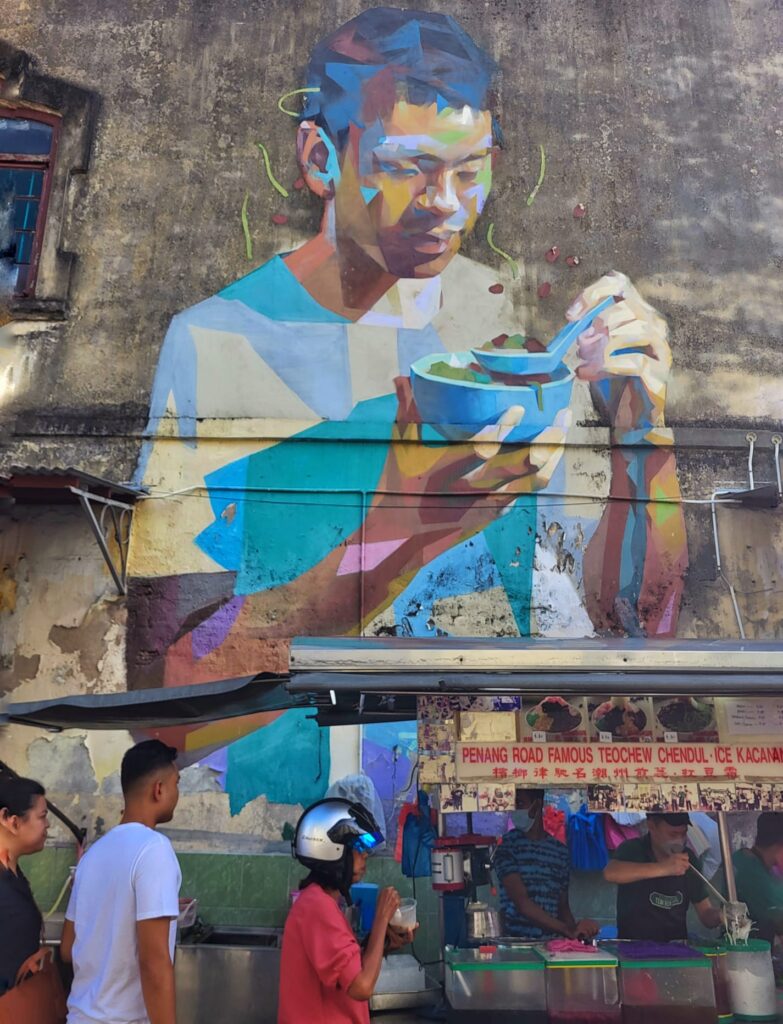
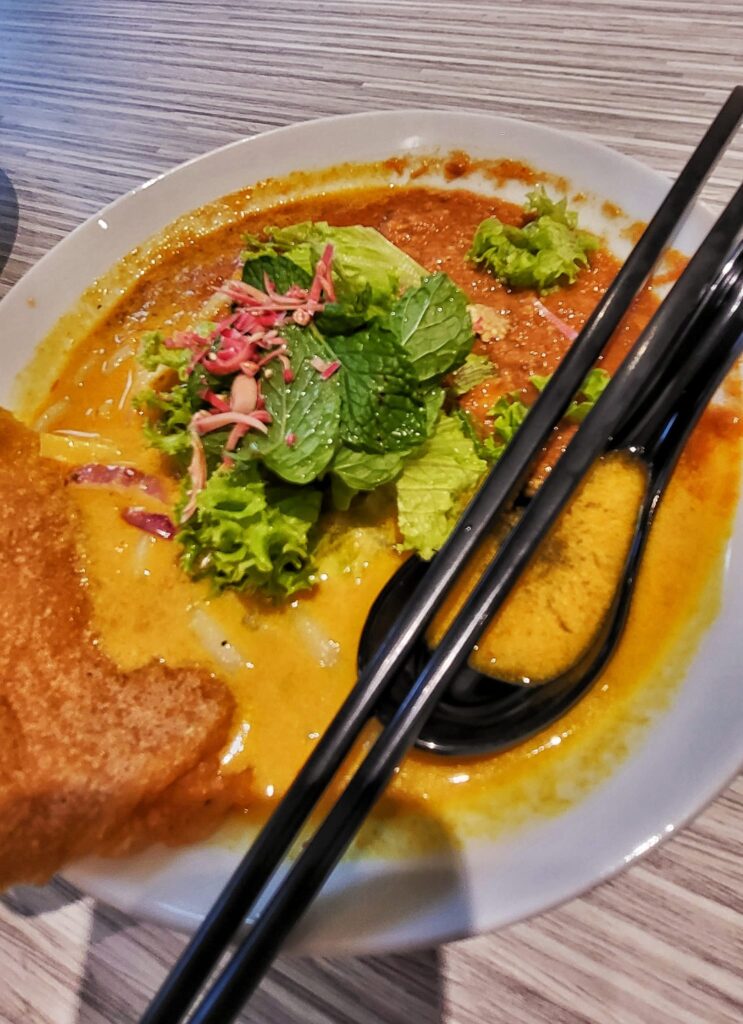
Check out!
It’s worth checking out what to do on the entire Penang island, because it has a lot of attractions to offer. If you want to share your thoughts, have questions or comments – leave a comment!





